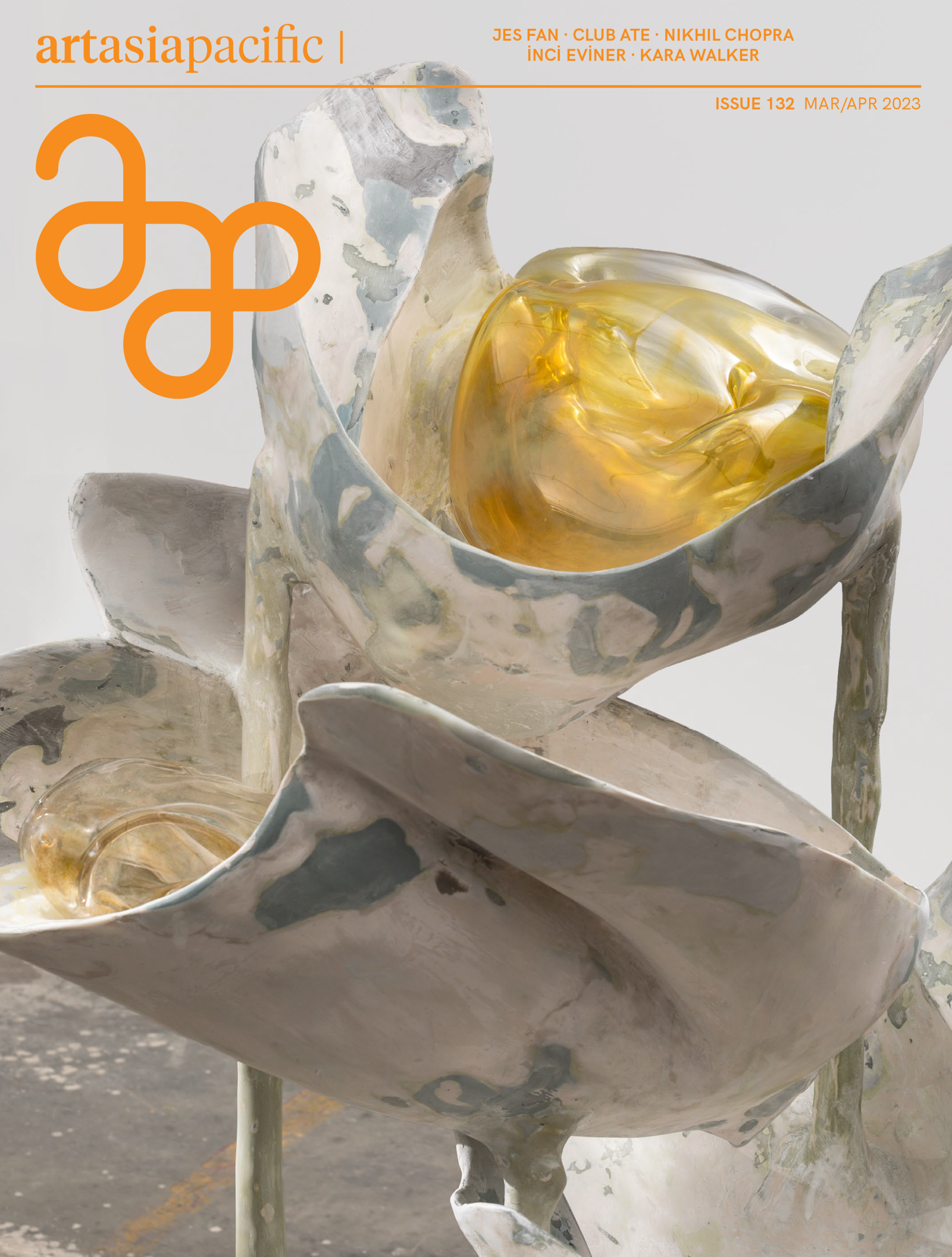Recovery, healing, transformation—collectively and individually we are undergoing these interconnected processes in the post-pandemic era.
Our cover feature looks at multimedia projects by Jes Fan, whose reflections on the historical and environmental changes in Hong Kong have inspired a new body of work using akoya pearl oysters. In conversation with ArtAsiaPacific’s New York desk editor Mimi Wong, Fan explains how his Mother of Pearl series (2020–22) uses the oyster’s natural response to grow shiny nacre over the site of an infection. For Wong, Fan’s interest in the precious material reveals how “we can treat the wound as a site of healing—and as an adaptation necessary for survival.”
The second feature in this issue marks the beginning of a collaborative series with Asia Art Archive to translate into English influential texts by members of the Hong Kong art community. For this issue, AAA researcher Anthony Yung selected three texts from 1991–92 produced as responses to the Hong Kong Cultural Centre’s construction and the opening of the Hong Kong Museum of Art. In these essays, translated by associate editor Pamela Wong, leading figures of the Hong Kong art scene questioned whether the city needed a western-style art museum and what kind of support for culture would benefit the community in the lead up to the 1997 handover and beyond.
For Inside Burger Collection, art historian Rebecca Peabody reflects on Kara Walker’s black-and-white cutout installation The Long Hot Black Road to Freedom, a Double Dixie Two-Step (2005–08). Peabody considers new meanings that might arise with the “exportation of US-specific imagery about slavery to other countries that are grappling with their own unique histories of oppression.” In Up Close, we spotlight recent projects by Ahmet Doğu İpek, Natasha Tontey, and Lo Lai Lai Natalie.
Our two profiles feature artists working with identity and transformation. Contributor Meera Menezes caught up with Nikhil Chopra at the Kochi-Muziris Biennale and learned about his latest drawing and performance projects, after the pandemic waylaid many live-art events. Johanna Bear, writing from Gadigal Country, Sydney, met with the performance duo Club Ate to discuss their collaborative, motion-based practice that draws on their Philippine heritage and mythology.
In essays, contributor Christopher Whitfield reflects on the themes of Ghost 2565, the festival of moving-image art and performances held in Bangkok, examining the surprising resilience embodied in spectral forms.
Elsewhere in the issue, Entang Wiharso pens a moving Tribute to the late Ashley Bickerton (1959–2022). For our One on One column, artist Sriwhana Spong writes about her fascination with the secret language of feminine rebellion devised by the 12th-century mystic Hildegard of Bingen.
In The Point, artist Dane Mitchell explains how a surreptitious initiative to 3D-print the Parthenon Marbles inspired his latest project, The Museum of Without (2022), while Rachel Lim files a Dispatch from Singapore during its month in the art world’s spotlight. For Reviews, we gathered reflections on the biennales in Singapore and Bangkok, as well as solo showcases from Hong Kong to Paris.
Our main news story looks at efforts by cultural organizations to provide support following the devastating earthquakes in southeastern Turkey and northern Syria. Several months earlier, associate editor Tiffany Luk visited the Istanbul studio of İnci Eviner. After reviewing Eviner’s video works, Luk reflects how her “visual language…pushes the boundaries of the body, exploring the ideas of male and female, animal and human, and the spaces in-between.” Like many artists featured in this issue, Eviner’s practice reflects the dramatic ruptures that societies have undergone in recent decades. At times of instability and chaos, artists are continuously seeking out new modes of resiliency for themselves and their communities.
A digital edition of the full AAP issue 132 is now available for purchase on Zinio, Google Play, iTunes, and Magzter.


